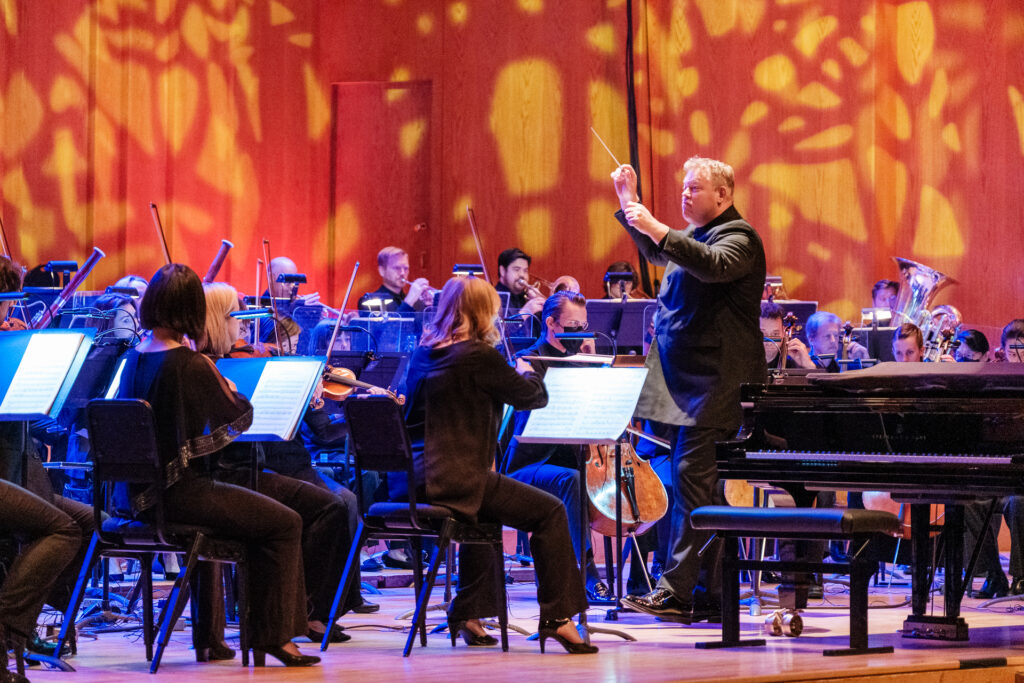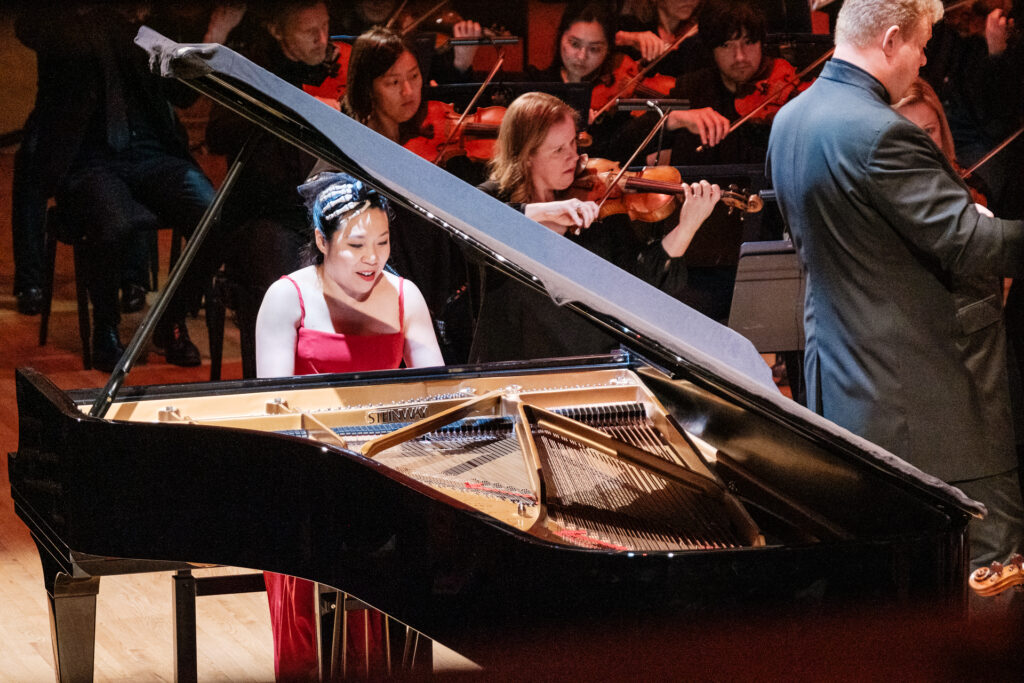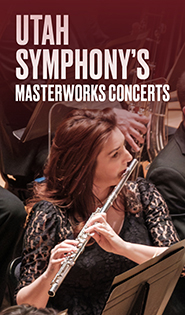Utah Symphony marks Rachmaninoff year with a resplendent Second Symphony

A first-time Utah Symphony concertgoer had two strong takeaways from Friday night’s program. First, that Abravanel Hall is one of the finest concert venues in the country; and second, that the Utah Symphony is a most impressive ensemble, as reviews and word of mouth have indicated.
Led by Rune Bergmann, who made his Utah Symphony debut in 2021, the clear highlight of the concert was the performance of Sergei Rachmaninoff’s Symphony No. 2.
In this 150th birthday anniversary year of Rachmaninoff’s birth, the composer is being feted across the fruited plain. Earlier this week the Philadelphia Orchestra performed the same work (plus the Third Symphony) at Carnegie Hall. The Philadelphians also backed Yuja Wang’s marathon concert of all five of the Russian composer’s concertante works last January.
Bergmann, a big man who requires no podium to see everyone, is one of the most smilingest maestros one will ever encounter. Yet even with his equanimous persona, the Norwegian conductor showed himself a sympathetic interpreter of Rachmaninoff’s brand of darkly brooding Russian romanticism.
Bergmann led a spacious account while still keeping the vast, 50-minute symphony on track and moving. The initial appearance of the main theme in the violins was nicely restrained, and Bergmann paced the opening movement and varied the emotional temperature skillfully throughout.
The scherzo-like second movement went with bristling vitality and Bergmann opened up for a luxuriant treatment of the sumptuous second theme in which the Utah Symphony strings provided richly upholstered playing of the big melody. So too in the long-limbed Adagio, the richness of the violins and violas gave glowing resplendence to the arching lyricism of the nostalgic main theme.
At terms Bergmann’s balancing seemed slightly off with secondary material and accompanimental figures poking through the top line for no apparent reason. But for the most part, he led a dedicated and idiomatic Rachmaninoff performance, drawing inspired playing by the orchestra across all sections. The performance was rounded off with a dynamic account of the finale, Bergmann ratcheting up the alternating of themes to a driving, exhilarating coda.
The performance well deserved the enthusiastic ovation by the capacity Abravanel Hall audience. But what was up with the sustained applause after every movement?
The red and purple mood lighting served to accent the musical devilry on tap in the first half, aptly timed for the Halloween season.
The one thing that can be said for Franz Liszt’s Totentanz is that it’s not quite as crummy a piece as his First Piano Concerto. Soloist Joyce Yang, a popular guest with the Utah Symphony, brought daunting power and graceful finesse to the Hungarian’s vacuous potboiler on the Dies irae theme, though the work’s noise and empty flash remain in inverse proportion to its musical substance. One wished this gifted pianist was being heard in better music. Bergmann and the orchestra provided alert support.
The applause brought Yang back out for a Gershwin encore, Earl Wild’s retooled version of “The Man I Love.” Though the pianist played the confection fluently, one would have liked a lighter touch and a bit more Gershwinesque charm.
The evening led off with Saint-Saëns‘ Danse macabre, which also utilizes the Dies irae theme. Shot out of the canon over the past half-century from its previous omnipresence as a concert staple, the Danse still makes an effective curtain-raiser. If Bergmann’s reading was more amiable than spooky, the orchestra’s whipcrack tuttis were impressively intense and concertmaster Madeline Adkins brought apt fiddle diablerie to her solos.
This week’s concerts mark the debut of the orchestra’s “Masterworks Magnified” series, with lighting enhancement, extra lobby activities, and a host.
The presentational aspects of this new format may need some work. Ben Kipp, the Utah Symphony’s director of education, was a cordial master of ceremonies Friday night yet his verbal program notes at the top of the evening went on too long and eventually started to take the air out of the room. This kind of basic musical introduction would seem better suited to a pops or children’s concert than a subscription program for adults. Kipp’s cringe dialogue with Bergmann to open the second half was mercifully cut short.
Equally dubious was the iridescent stage lighting, with the constantly changing mood enhancement (red, purple, blue and yellow) becoming a visual distraction during the Rachmaninoff performance. Great music doesn’t require a light show.
The program will be repeated 5:30 p.m. Saturday. utahsymphony.org



